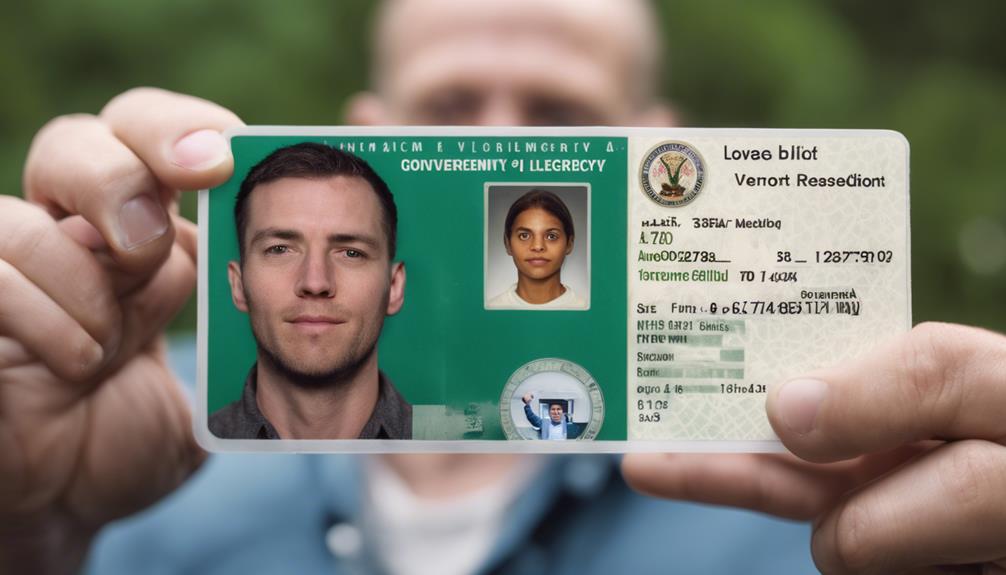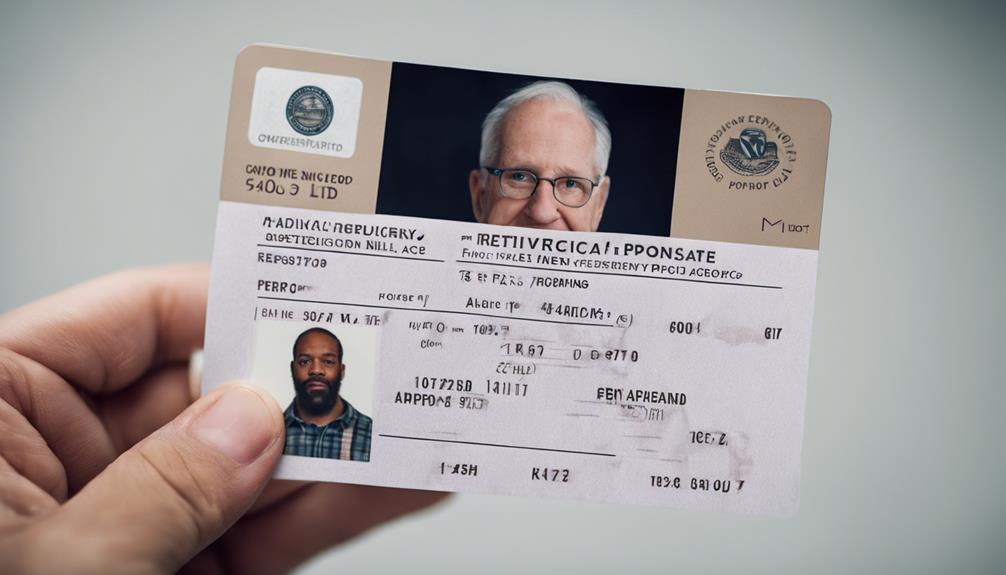To secure Vermont Emergency Medicaid, prepare proof of residency, income verification, and adherence to asset limitations. Valid residency such as utility bills or lease agreements is essential alongside income evidence like pay stubs and tax records. Accurate asset disclosure, encompassing accounts and real estate, directly influences eligibility. Satisfactory document submission hastens the application process and evaluation for approval.
Eligibility Criteria

To qualify for Vermont Emergency Medicaid, individuals must meet specific eligibility criteria outlined by the state's Medicaid program. Eligibility determination is a crucial aspect of the application process, and applicants must undergo a thorough verification process to establish their eligibility. This process involves reviewing the applicant's income level, household size, and any existing health coverage.
Necessary documentation plays a key role in proving eligibility for Vermont Emergency Medicaid. Applicants are typically required to provide proof of residency in Vermont, which can include documents such as a driver's license, utility bills, or lease agreements. Additionally, individuals may need to submit documentation related to their income, assets, and household composition to support their application.
Residency Verification
Residency verification is a fundamental aspect of the application process for Vermont Emergency Medicaid, requiring applicants to provide documentation confirming their legal residence in the state. Proof of address is a key component of residency verification. Applicants must submit documents such as utility bills, lease agreements, or government correspondence that clearly display their Vermont address.
Additionally, applicants need to demonstrate their residency duration. This entails showing how long they have been living in Vermont, which is often determined by providing a combination of documents like rental agreements, pay stubs, or bank statements spanning the required residency period. The residency duration requirement ensures that applicants have established a genuine and sustained presence in the state, thereby qualifying them for Vermont Emergency Medicaid.
It is crucial for applicants to gather all necessary documentation to accurately verify their residency status and meet the eligibility criteria for this essential healthcare program.
Income Requirements

Verifying income is a critical step in the application process for Vermont Emergency Medicaid, ensuring that applicants meet the specified financial eligibility requirements. To assess income eligibility for the program, applicants are required to provide detailed financial documentation and proof of income. This documentation typically includes recent pay stubs, tax returns, bank statements, or any other relevant financial records that demonstrate the applicant's current income status.
Proof of income plays a vital role in determining whether an individual qualifies for Vermont Emergency Medicaid. The program sets specific income thresholds that applicants must fall within to be eligible for benefits. By submitting accurate and up-to-date financial documentation, applicants enable the Medicaid authorities to evaluate their financial situation accurately and make an informed decision regarding their eligibility for the program.
Ensuring that applicants provide the necessary proof of income is essential to maintaining the integrity of the Vermont Emergency Medicaid program and guaranteeing that benefits are allocated to those who meet the established financial criteria.
Asset Limitations
When evaluating eligibility for Vermont Emergency Medicaid, consideration of asset limitations is a crucial factor in determining an individual's financial qualification for the program. Asset limitations refer to the maximum value of assets an individual can possess while still being eligible for Vermont Emergency Medicaid.
During the eligibility review process, applicants are required to undergo asset verification to ensure compliance with these limitations. Asset verification involves assessing the value of various assets such as bank accounts, investments, real estate, vehicles, and personal property. It is essential for determining if an individual meets the asset limitations set forth by the Vermont Emergency Medicaid program.
Applicants must provide accurate and up-to-date information regarding their assets to facilitate the eligibility review process efficiently. Failure to adhere to asset limitations may result in disqualification from receiving Vermont Emergency Medicaid benefits. Therefore, it is imperative for individuals seeking assistance through this program to carefully review and accurately report their assets during the application process.
Required Documentation

A comprehensive set of documents is necessary to support the application process for Vermont Emergency Medicaid. Document submission plays a crucial role in determining eligibility for this program. Applicants are typically required to provide proof of identity, residency, income, and immigration status. This includes but is not limited to a valid photo ID, utility bills or lease agreements, pay stubs or tax returns, and immigration documents if applicable.
During the verification process, the submitted documents are carefully reviewed to ensure they meet the program's requirements. Any discrepancies or missing information may result in delays or denial of benefits. It is essential for applicants to double-check all documentation before submission to avoid such issues.
Moreover, the verification process may also involve contacting third parties, such as employers or landlords, to confirm the information provided. Being thorough and accurate in document submission can expedite the application process and increase the chances of approval for Vermont Emergency Medicaid.
Application Process
The application process for Vermont Emergency Medicaid involves a series of steps that applicants must carefully follow to be considered for eligibility. To begin, individuals seeking Emergency Medicaid must complete an application form, which can typically be obtained through the Department for Children and Families (DCF) or online through the Vermont Health Connect website. The application requires detailed information about the applicant's financial situation, household composition, and medical needs.
Once the application is submitted, there is a timeline for review and processing. Applicants should expect a waiting period during which their eligibility is assessed. It is crucial to provide all required information accurately to avoid delays in the application process. If applicants require assistance with completing the application or have questions about the process, they can reach out to DCF or other designated organizations for guidance.
Navigating the application process for Vermont Emergency Medicaid can be complex, but with the necessary information and assistance, individuals can increase their chances of obtaining the vital healthcare coverage they need.
Approval and Coverage

Upon successful approval of the application for Vermont Emergency Medicaid, eligible individuals will gain access to essential healthcare coverage for their medical needs. The approval process for Vermont Emergency Medicaid involves a thorough review of the applicant's eligibility criteria, including income levels, residency status, and citizenship.
Once approved, beneficiaries may receive coverage for a variety of healthcare services, including doctor visits, hospital stays, prescription medications, and other necessary treatments.
Coverage details under Vermont Emergency Medicaid typically include emergency services, such as ambulance transportation and emergency room care, as well as preventive services like vaccinations and screenings. Additionally, beneficiaries may have access to specialist care, mental health services, and substance abuse treatment as deemed medically necessary.
It is important for approved individuals to familiarize themselves with the specific coverage details outlined in their Medicaid plan to ensure they receive the appropriate benefits for their healthcare needs.
Conclusion
In conclusion, meeting the eligibility criteria, providing necessary documentation, and submitting a complete application are essential steps in obtaining Vermont Emergency Medicaid.
Remember, 'preparation is key' when navigating the requirements and ensuring coverage for emergency medical needs.
By carefully following the established guidelines and submitting all required information, individuals can access the necessary healthcare services in times of crisis.
